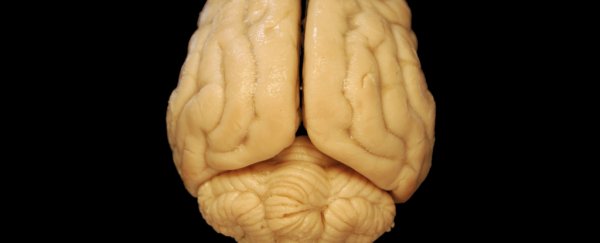Scans taken of people born with only one hand have revealed areas of the brain typically associated with the 'missing hand' are taken over by other parts of the body, radically changing our thinking on how our brain operates.
Whether it's an arm or a foot, other limbs seem to fill in for the missing hand. In other words, rather than being responsible for specific parts of the body, as previously thought, different sections of the brain could be responsible for specific functions.
The team of researchers say their findings could prompt a fundamental shift in our understanding of the brain and the way it's able to manage certain tasks with different parts of the body.
"Scientifically, I think one way to put our results in context is to say, what if the hand area is not the hand area per se, but just the part of the brain in charge of function 'normally' carried by that hand?" says one of the researchers, Tamar Makin from University College London in the UK.
The study looked at 17 people born with just one hand and 24 two-handed controls, who were video recorded while carrying out five everyday tasks, including handling money and wrapping presents.
Participants were also asked to move different parts of their body, and all the while their brains were being scanned via MRI.
The researchers found that when congenital one-handers used something to replace their missing hand in a task – like an elbow or a foot – that body part lit up the same part of the brain as the missing hand would in a two-handed person.
We should point out that this is just a small sample of people, and the scientists aren't certain why this is happening, but they have a hypothesis: that areas of the brain aren't organised by body parts, but by what those body parts are doing.
"If true, this means we've been misinterpreting brain organisation based on body part, rather than based on function," says Makin.
"It's kind of mind-blowing for me to think we could have been getting this wrong for so long. The implications, if this interpretation is correct, are massive."
For now, it's still just a hypothesis, but it's a hypothesis that could lead to a rethink on how our brain is organised. Maybe the brain is more flexible and adaptable than we thought.
There are already studies that indicate people with missing senses, such as sight, can recruit parts of the brain usually responsible for other tasks, such as performing calculations or processing language.
We have understood for some time that the brain can rewire itself following a limb amputation to make use of the real estate, sometimes causing painful 'phantom sensations', but this new discovery could potentially cast existing research in a new light.
With about 86 billion neurons firing in all directions, the brain is an incredibly complex organ that scientists are still trying to properly understand.
While we're making progress in smarter AI, working out the fundamentals of copying human movement in robots continues to prove tricky – by the age of two, humans can control their hands better than the most advanced robots.
With that in mind, the findings could eventually help us to understand how the brain compensates for the loss of a limb, and improve prosthetic replacements which could be attached to the right part of the brain and controlled with our minds.
This new research could help push all those efforts further forward.
"If we, as neuroscientists, could harness this process, we could provide a really powerful tool to better healthcare and society," adds Makin.
"By learning how this occurs spontaneously in one-handers, we can get a handle on what we might be able to achieve."
The research has been published in Current Biology.
